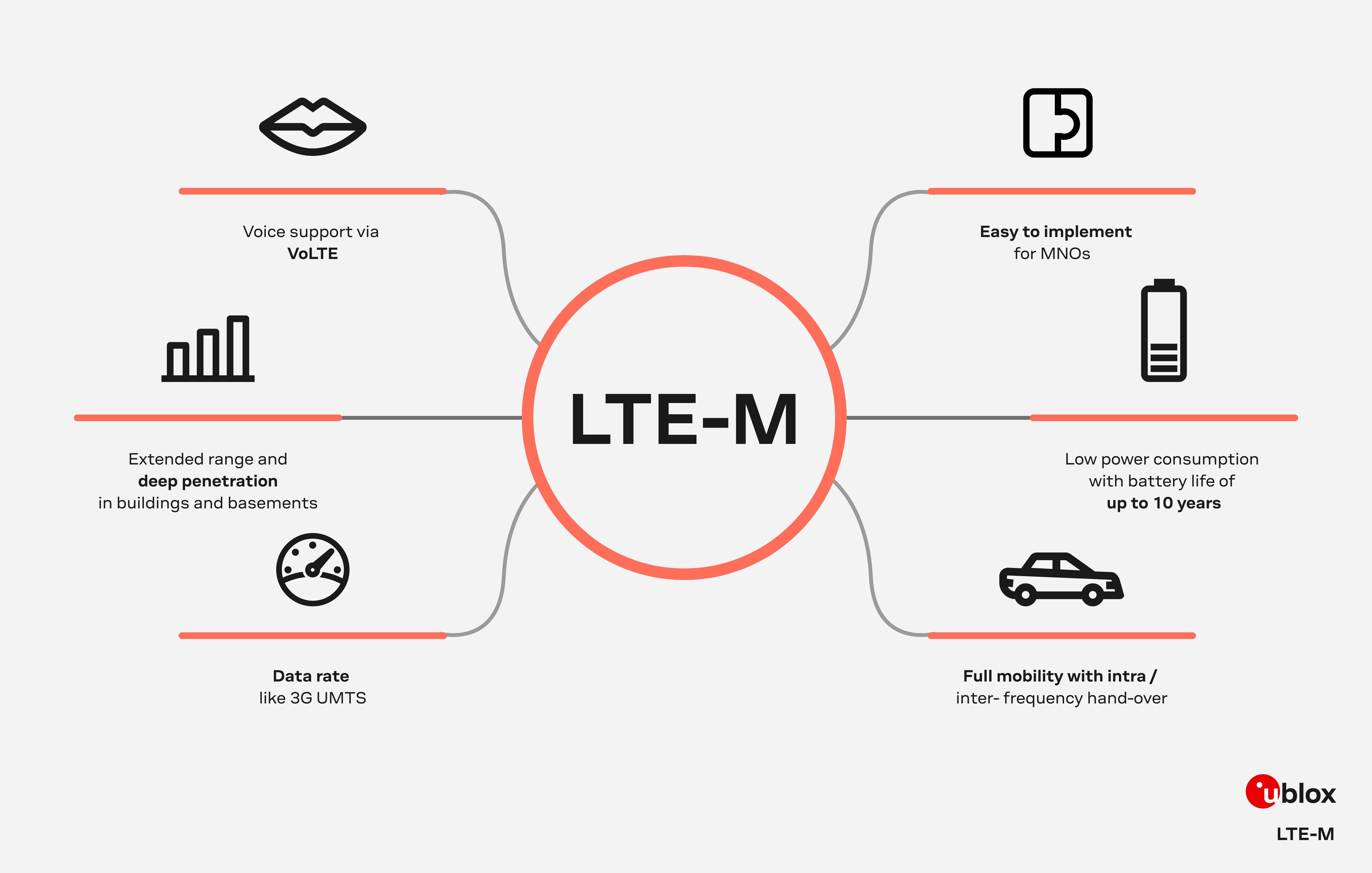
- Support portal
- Evaluation Kits and partner products
u-blox Support
- Product documentation
Documentation
- Investor relations
Investor relations
Technology
|
25 Aug 2023
LTE-M, or LTE Cat M, is a cellular wireless communication technology specifically designed for Internet of Things (IoT) or machine-to-machine (M2M) application requirements.
LTE-M, or LTE Cat M, is a cellular wireless communication technology specifically designed for Internet of Things (IoT) or machine-to-machine (M2M) application requirements. LTE-M modules have low power demand requirements, deliver relatively low data rates, and transmit wireless data in the licensed spectrum domain.
LTE-M is a low-power wide-area (LPWA) wireless communication technology. LPWA technologies fall into two groups: cellular standards such as LTE-M and NB-IoT (and, more recently, 5G mMTC), and non-cellular standards including SigFox and LoRa.
LTE-M is a low‑power wide‑area (LPWA) air interface primarily designed to replace 2G and 3G cellular technologies while introducing several additional benefits. The first release of LTE-M, LTE-Cat M1, was specified in 3GPP Rel 13, along with NB-IoT, and first networks were deployed in 2017. It provides data rates up to 1 Mbit/s (upload) and 375 kbit/s (download) in half duplex mode with a significantly improved link budget of up to -156 dBm, allowing signals to penetrate deep into buildings. By enabling applications to exploit low RF transmit power levels in the 20-23 dBm range, LTE-M extended the service life for battery-powered applications compared to 2G and 3G. At 23 dBm transmit power, LTE-M provides highly reliable performance in all signal conditions and at cell edges.
Like NB-IoT, LTE-M supports Power Save Mode (PSM) and extended DRX (eDRX). By greatly reducing total power consumption, these features can dramatically increase the power autonomy of connected solutions, delivering up to several years of service life.
LTE-M sets itself apart from NB-IoT by supporting moving applications such as tracking applications in which the devices and their communication data flow need to be handed over from one cell tower to the next as they move from cell to cell. This hand-over functionality is absent in NB-IoT, which is optimized for static end devices.
LTE-M has been widely adopted around the world to replace 2G/3G networks for IoT. North America continues to be the dominant market. But as the 2G and 3G networks sunset, LTE-M technology is becoming the preferred choice for cellular IoT use cases in all the regions where it is deployed compared to NB-IoT. This is due to its wider bandwidth, mobility, and higher data rate.
LTE-M has a lower data rate than LTE Cat 1 and Cat 1bis. Still, its 375-1000 kbit/s provided are more than enough to serve most IoT use cases. Moreover, LTE-M’s PSM and eDRX low power modes paired with its deeper in-building penetration ensure a consistent margin on battery life and connectivity handling.
Key features of LTE-M include:
|

